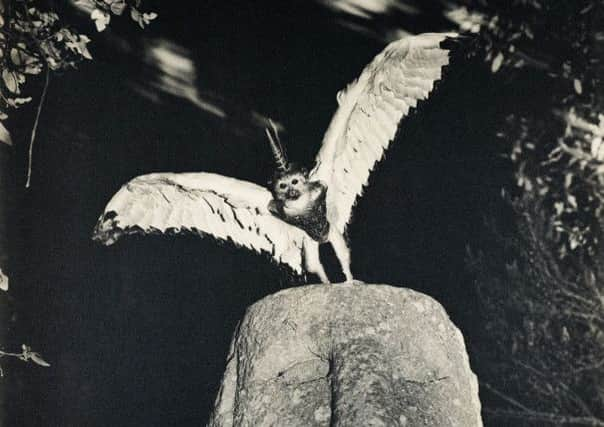Artwork merges truth and fiction


The idea of relying on photography as evidence has become ever more fudged and complicated, especially in our digital age when the manipulation of images is commonplace. It is this notion which is at the heart of a new exhibition which opened last week at the National Media Museum in Bradford.
Stranger Than Fiction showcases a selection of more than 30 years’ work by the award-winning Catalan photographer Joan Fontcuberta. Using the visual language of advertising, journalism, scientific journals and museum displays, his work presents a convincing yet subversive version of reality that is laced with dry wit and calls into question the authority of photography and our own tendency to believe what we see.
Advertisement
Hide AdAdvertisement
Hide Ad“I have known about Fontcuberta’s work for a long time and was really keen to bring an exhibition of his work to the UK, largely because he isn’t as well known here as he is in the rest of Europe,” says Greg Hobson, curator of photographs at the Media Museum. “His work shows an incredible amount of imagination and creativity. We have put together a show of six of his series – he has created 90 – loosely connected by metaphysics and the natural world.” The unique collection of photographs and objects cover subjects as diverse as mermaid fossils, a secret order of Scandinavian monks practising miracles, undocumented plants and creatures, plus newly mapped landscapes and constellations.
An interesting figure, Fontcuberta is renowned for introducing previously unseen wonders to the public and could be described as one of the world’s most creative and elaborate hoaxers. “His very early career started in advertising and he refers to that time as the period when he learnt how to lie,” says Hobson. “He grew up in Spain during the Franco years so ideas around censorship and truth in photography influenced his work. All his work asks us to question the credibility of photography and whether what we are seeing is real or invented. He believes that the truth is optional and he does this in a subtle and funny way. He wants us to question every single instance where photography is asked to validate something – everything is entirely dependent on context.”
It is quite a coup for the Museum to be hosting this exhibition – the first UK retrospective of Fontcuberta’s work – which came to Bradford following its inaugural run at Media Space in the Science Museum, London. “Fontcuberta won the Hasselbad International Award in 2013 and that’s the largest single financial prize for photography in the world. It is a real privilege to be showing the work of someone at the peak of his international career.” Hobson worked closely with Fontcuberta in making the selections for the show. At the centre of it is Fauna, which first appeared in 1987, a detailed overview of the zoological research of fictional Professor Peter Ameisenhaufen complete with painstakingly fabricated family history. “I really wanted to include that work because it was so important in developing how I think as a curator of photography,” says Hobson. So far the response to the show has been very positive with viewers relating to Fontcuberta’s playful approach. “Once of the very real pleasures for me has been hearing people laughing out loud as they are reading the captions,” says Hobson. “Which doesn’t happen enough in art I don’t think.”
• Stranger Than Fiction, National Media Museum, Bradford, to February 5, 2015.